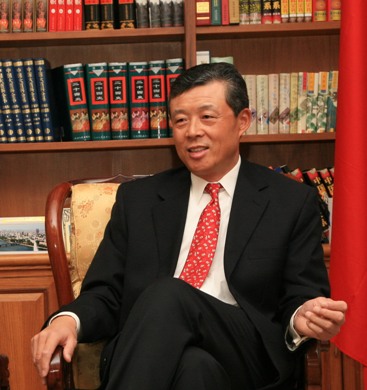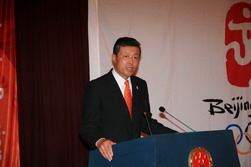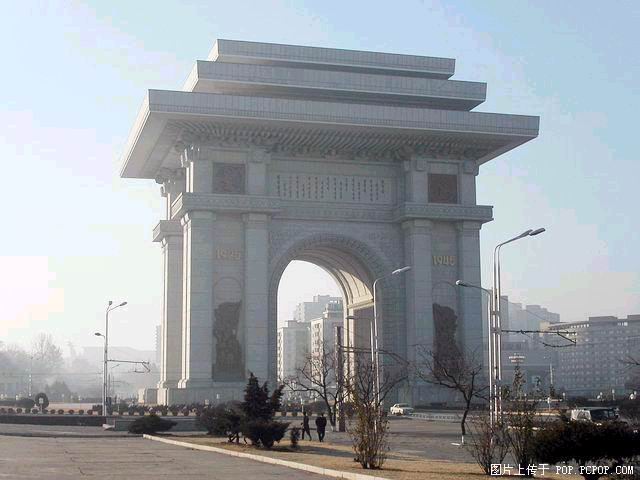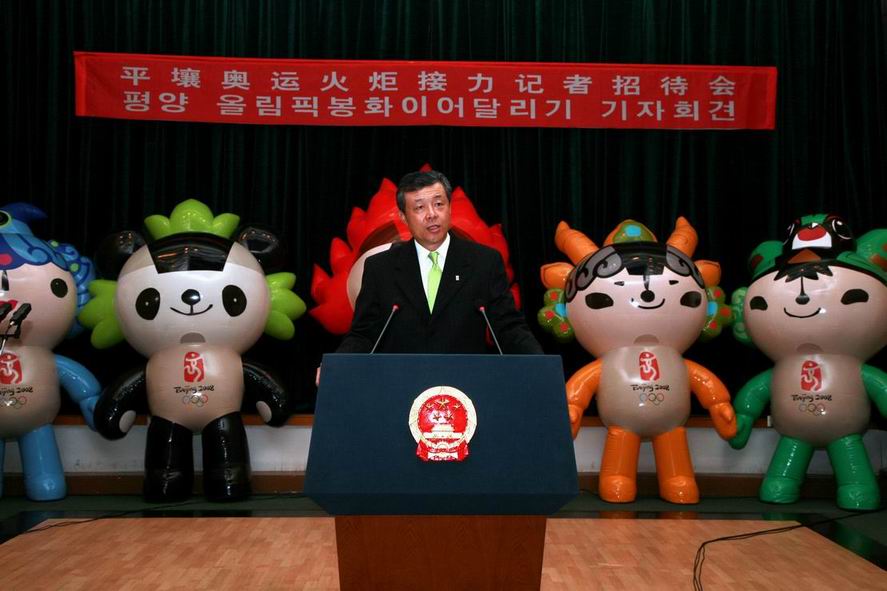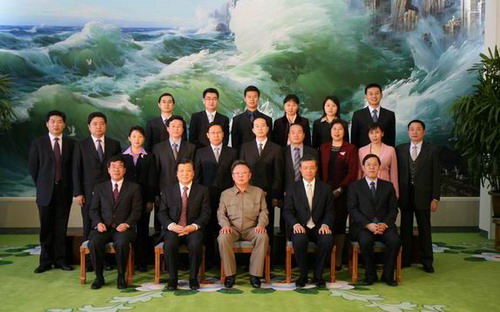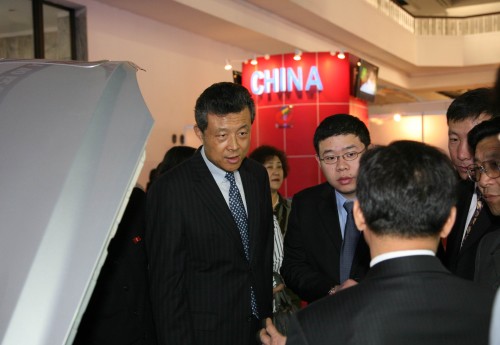North East Asia Sub-regional Programme for Environment Cooperation (NEASPEC), was launched in 1993 as a comprehensive intergovernmental cooperation mechanism. China, Japan, Democratic People's Republic of Korea (DPRK), Mongolia, Republic of Korea (ROK), Russian Federation, with shared vision, strive to make concerted efforts to address environmental challenges in this sub-region. Institutionally, Meeting of Senior Officials on Environmental Cooperation in North-East Asia (SOM), held annually on a rotational basis with decisions made by consensus, functions as the governing body and principal vehicle for the evolution of NEASPEC with UNESCAP providing interim Secretariat services.
MAJOR ACHIEVEMENTS AND POTENTIALLY REPLICABLE (SUCCESSFUL EXPERIENCES)
The projects carried out under the NEASPEC Framework have provided a constructive platform for member countries to exchange information and enhance capacity especially in the area of air pollution reduction in the coal-fired power plants. So far, a wide array of on-site workshops, training sessions and expert meetings has been organized. As a result, concrete improvements have been made in a) awareness building on clean technology options and their availability; b) regional monitoring capacities through information and experiences sharing on emission monitoring, emission standards, policies and legislation; c) technical and management capacity enhancement on the part of engineers, authorities and decision-makers in terms of pollutant control; e) emission standard making for power plants d) the development of institutions to sustain the endeavours of capacity building, i.e. North-East Asian Training Centre for Pollution Reduction in Coal-fired Power Plants and North East Asian Centre of Environmental Data Training (NEACEDT).
A step further, gaps and future action orientations have been identified during the Eleventh Meeting of Senior Officials (SOM-11). They were, among others, the development of the Sub-regional Action Plan for Efficiency Improvement of Particulate Abatement Systems in Existing Power Plants; the expansion of pollutant category in view of integrated approach to environmental management of electric power plants; policy measures as a result of awareness raised in national authorities, decision-makers and financial institutions; economic estimation of the air pollution and market-based approach to attract investments for efficiency improvement in particulate abatement systems in power plants.
The largest beneficiaries of the project, China and Mongolia, representatives of both governments have expressed sincere hope for the expansion of scope of pollution control in their coal-fired power plants on the SOM-10. However, the benefits are hoped to be extended to non-member countries of Asian Development Bank (ADB) like DPRK and Russian Federation.
In turn, by arranging various activities under the North-East Asia subregional programme of environmental cooperation, ESDD/ESCAP has gained some excellent experience in assisting countries in developing a comprehensive training programme for reducing pollution from coal-fired power plants, including training curricula, manuals and materials for on-site training demonstration and hands-on-equipment training.
Institutionally, the establishment of the following mechanism is expected to sustain the current achievements:
1. On-site Assessment on Efficiency Improvement of Particulate Abatement Systems in Existing Power Plants and technical audits of coal-fired power plants, including review, analyze and evaluation of the state of the particulate abatement systems;
2. Institutional building of NEACEDT to sustain the data gathering and information exchange endeavours of the Programme. Under A Framework of Nature Conservation in North-East Asia, survey and data collection on the threatened species and an inventory of such are being worked out.
In addition to the direct impact, some other transferable and duplicable experiences have accrued value-added to parallel sub-region and regions. SOM-10 noted with satisfaction the success achieved and expertise acquired during the implementation of the activities under the project of Trans-boundary Air Pollution Control. The success was further credited that other sub-regions in Asia and the Pacific, i.e. Central Asia , were willing to utilize the training and data monitoring manuals developed under the project and to learn from the experience and knowledge of the NEASPEC air pollution experts' network.
UNESCAP-NEASPEC created a favorable environment of trust and cooperation among the countries in the sub-region and that spirit assisted in attracting funds to support the activities in the sub-region.
NEASPEC serves as a mediator between global mandate and national environmental needs. As global sustainable development requires actions to be taken in each country in accordance with national capacities, the key to success in addressing transboundary harms is a structure that connects international policymaking with national implementation. By taking into view the domestic policies and measures presented by the participating countries, Meetings of Senior Officials (SOMs) of NEASPEC tried to align projects selection with global agenda, like Rio Declaration and Agenda 21, making them significant baselines and guiding principles for NEASPEC. SOM, therefore, offers a forum for an extensive discussion of environmental issues at the intergovernmental level and meanwhile serves as an interface where global agenda could be channeled into national implementation.
Environmental data are a crucial basis for optimizing of plant operations and reducing air pollution. Updated data resulting from scientific monitoring methodologies are valuable sources of information for policy-makers to make environmental policies. However, sharing environmental data with neighbouring countries used to be considered a sensitive issue by certain member country. By taking up the following measures, NEACEDT under the Framework of NEASPEC has achieved a breakthrough through its coordination and facilitating mechanism.
NEACEDT allowed opportunities for the exchange of opinions and know how through joint monitoring exercises among engineers, researchers and governmental officials from North-East Asian countries.
The development of data standardization methods and the establishment of the monitoring network based on existent monitoring stations in the member countries have largely encouraged the member governments to take up an open and impartial attitude towards pollutant emission data sharing and greatly facilitated the active and wide participation.
The publication, entitled Recommendations of the Methodologies for Air Pollutant Emission Monitoring, identifying both common and differentiated components of standards in the participating countries, offers comprehensive assessment of the inter-comparability of air quality data.
Such technical assistance endeavours, facilitated by NEACEDT in consultation with National Focal Points, has manoeuvred the member countries towards environmental cooperation by providing a neutral and beneficial channel of data sharing and harmonization.
In addition to the considerable success achieved through project activities, NEASPEC has made a valuable contribution to the WSSD preparatory process.
A sub-regional preparatory meeting involving all stakeholders was organized in July 2001, where NEASPEC provided a platform for multi-stakeholders to identify the high priority areas of the sub-region, i.e. financing for sustainable development, capacity building and transfer of environmentally sound technologies.
The report of the Meeting was adopted and integrated into the Phnom Penh Regional Platform on Sustainable Development for Asia and the Pacific. The recommended initiatives were incorporated into the regional chapter of the Johannesburg Plan of Implementation (JPOI). As an implementation mechanism on the subregional level, NEASPEC prioritized project thrusts to address key issues identified in Phnom Penh Regional Platform, which in turn would doubtlessly contribute to the amelioration of the environment of this sub-region.
